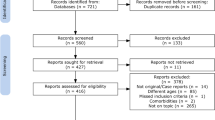Abstract
Identifying the neural basis of dyslexia is a fundamental goal of developmental neuroscience. Final-phoneme elision (PE) test is a paradigm used for assessing phonological deficit (PD), which is widely considered a causal risk factor for dyslexia. However, the causal relationship between PD to dyslexia has been examined primarily based on behavioral observations. Towards facilitating the exploration of the neurophysiological origins of the theorized link between PD and dyslexia, we set out to isolate differential neural activation patterns in children with dyslexia during PE. Accordingly, we present a machine-learning-based approach to identifying differential brain activity in children with dyslexia and controls during the PE. Our method formulates an optimization problem to extract informative EEG components based on the ‘Neural-congruency hypothesis’, termed Phoneme-related Neural-congruency components. It then uses a machine-learning algorithm to optimally combine the resulting components to differentiate between the neural activity of children with dyslexia and controls. We apply our approach to a real EEG dataset involving children with dyslexia and controls. Our findings demonstrate that our method generates novel insights into the neural underpinnings of dyslexia and the potential neural origins of phonological deficits as a causal factor of dyslexia. Notably, our approach overcomes several methodological challenges in conventional EEG analysis methods; therefore, it could be utilized in studying the neural origins of other behaviorally defined developmental disorders previously overlooked because of such methodological constraints.
Access this chapter
Tax calculation will be finalised at checkout
Purchases are for personal use only
Similar content being viewed by others
References s
Breznitz, Z.: Brain activity during performance of naming tasks: comparison between dyslexic and regular readers. Sci. Stud. Read. 9, 17–42 (2005)
Caravolas, M., Lervåg, A., Defior, S., Seidlová Málková, G., Hulme, C.: Different patterns, but equivalent predictors, of growth in reading in consistent and inconsistent orthographies. Psychol. Sci. 24, 1398–1407 (2013)
Christoforou, C., Constantinidou, F., Shoshilou, P., Simos, P.: Single-trial linear correlation analysis: application to characterization of stimulus modality effects. Front. Comput. Neurosci. 7, 15 (2013)
Christoforou, C., Fella, A., Leppänen, P.H.T., Georgiou, G.K., Papadopoulos, T.C.: Fixation-related potentials in naming speed: a combined EEG and eye-tracking study on children with dyslexia. Clin. Neurophysiol. 132, 2798–2807 (2021)
Christoforou, C., Haralick, R.M., Sajda, P., Parra, L.C.: The bilinear brain: towards subject-invariant analysis. In: 2010 4th International Symposium on Communications, Control and Signal Processing (ISCCSP), pp. 1–6. IEEE (2010)
Christoforou, C., Hatzipanayioti, A., Avraamides, M.: Perspective taking vs mental rotation: CSP-based single-trial analysis for cognitive process disambiguation. In: Wang, S., et al. (eds.) BI 2018. LNCS (LNAI), vol. 11309, pp. 109–118. Springer, Cham (2018). https://doi.org/10.1007/978-3-030-05587-5_11
Christoforou, C., Papadopoulos, T.C., Theodorou, M.: Single-trial FRPs: a machine learning approach towards the study of the neural underpinnings of reading disorders. In: The International FLAIRS Conference Proceedings, vol. 34 (2021)
Christoforou, C., Theodorou, M.: Towards EEG-based emotion recognition during video viewing: neural-congruency explains user’s emotion experienced in music video. In: The International FLAIRS Conference Proceedings, vol. 34 (2021)
Desroches, A.S., Newman, R.L., Robertson, E.K., Joanisse, M.: Electrophysiological indices of phonological impairments in dyslexia. J. Speech Lang. Hear. Res. 56, 250–264 (2013)
Hämäläinen, J.A., Landi, N., Loberg, O., Lohvansuu, K., Pugh, K., Leppänen, P.H.T.: Brain event-related potentials to phoneme contrasts and their correlation to reading skills in school-age children. Int. J. Behav. Dev. 2, 357–372 (2018)
Kovelman, I., et al.: Brain basis of phonological awareness for spoken language in children and its disruption in dyslexia. Cereb. Cortex 22, 754–764 (2012)
O’Brien, B.A., Wolf, M., Lovett, M.W.: A taxometric investigation of developmental dyslexia subtypes. Dyslexia 18, 16–39 (2012)
Papadopoulos, T.C., Spanoudis, G., Kendeou, P.: The dimensionality of phonological abilities in Greek. Read. Res. Q. 44, 127–143 (2009)
Papadopoulos, T.C., Georgiou, G.K., Parrila, R.K.: Low-level deficits in beat perception: neither necessary nor sufficient for explaining developmental dyslexia in a consistent orthography. Res. Dev. Disabil. 33, 1841–1856 (2012)
Parrila, R.K., Georgiou, G.K., Papadopoulos, T.C.: Dyslexia in a consistent orthography: evidence from reading-level match design. Dyslexia 26, 343–358 (2020)
Parrila, R.K., Protopapas, A.: Dyslexia and word reading problems. In: Cain, K., Compton, D., Parrila, R. (eds.) Theories of Reading Development, pp. 333–358. John Benjamins, Amsterdam (2017)
Philiastides, M.G., Sajda, P.: Temporal characterization of the neural correlates of perceptual decision-making in the human brain. Cereb. Cortex 16, 509–518 (2005)
Schulte-Körne, G., Bruder, J.: Clinical neurophysiology of visual and auditory processing in dyslexia: a review. Clin. Neurophysiol. 121, 1794–1809 (2010)
Wagner, R.K., et al.: The prevalence of dyslexia: a new approach to its estimation. J. Learn. Disabil. 53, 354–365 (2020)
Author information
Authors and Affiliations
Corresponding author
Editor information
Editors and Affiliations
Rights and permissions
Copyright information
© 2022 Springer Nature Switzerland AG
About this paper
Cite this paper
Christoforou, C., Papadopoulos, T.C., Theodorou, M. (2022). Toward the Study of the Neural-Underpinnings of Dyslexia During Final-Phoneme Elision: A Machine Learning Approach. In: Mahmud, M., He, J., Vassanelli, S., van Zundert, A., Zhong, N. (eds) Brain Informatics. BI 2022. Lecture Notes in Computer Science(), vol 13406. Springer, Cham. https://doi.org/10.1007/978-3-031-15037-1_7
Download citation
DOI: https://doi.org/10.1007/978-3-031-15037-1_7
Published:
Publisher Name: Springer, Cham
Print ISBN: 978-3-031-15036-4
Online ISBN: 978-3-031-15037-1
eBook Packages: Computer ScienceComputer Science (R0)




